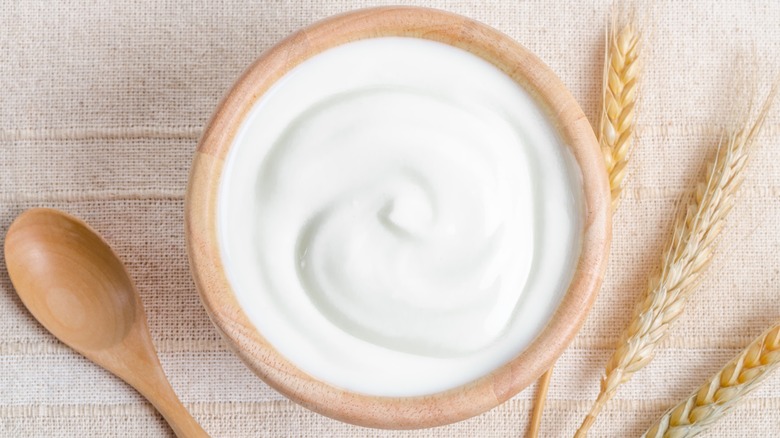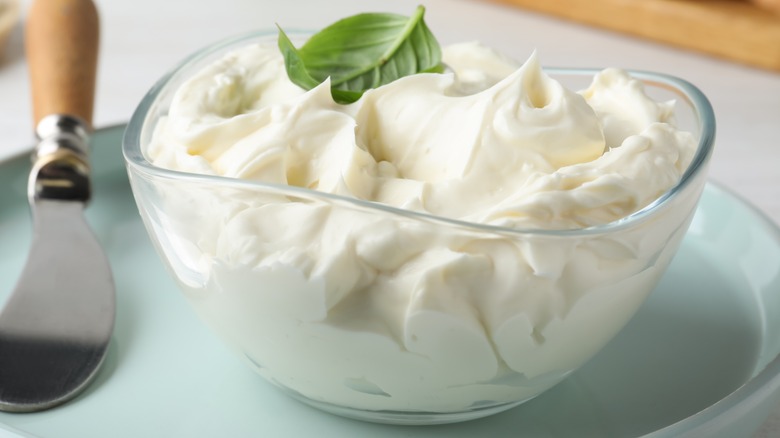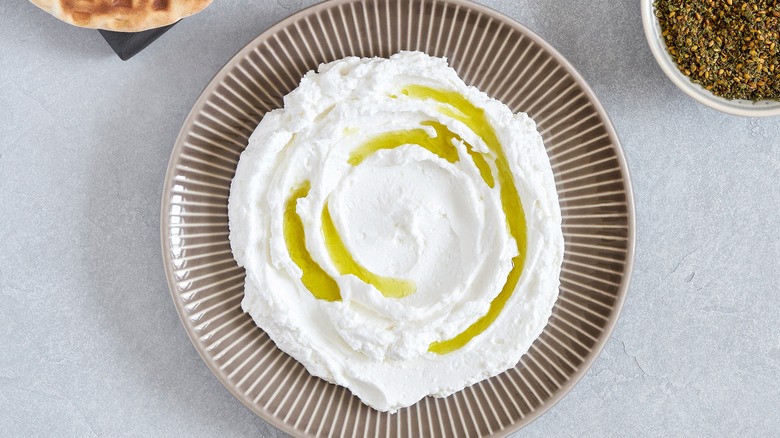What You Need To Know Before Substituting Yogurt For Cream Cheese
Cream cheese — in addition to being a rich, spreadable topping for bagels — is known for imparting a creamy and decadent flavor to a variety of dips, baked goods, and other recipes. Indeed, cream cheese can seem like an essential ingredient, but if you open the fridge and realize you ran out of it when preparing recipes like buffalo chicken dip, have no fear. Fortunately, if you forgot to grab cream cheese at the store or simply prefer dairy options that are higher in protein and lower in fat, you can substitute in yogurt for the cream cheese.
Prior to swapping out cream cheese with yogurt in your recipe, however, check that you have a Greek yogurt or a similarly thick, strained yogurt on hand. Traditional yogurt has a much thinner and runnier consistency since the extra liquid whey has not been strained. That additional moisture will make your recipes too watery, so you'll want to ensure you're using a quality Greek yogurt with a thick dollop. In order to impart the creamy taste desired in most recipes calling for cream cheese, it's also helpful to use a Greek yogurt that's full-fat.
Cream cheese vs. Greek yogurt
Full-fat Greek yogurt and similar styles of strained yogurt, like Icelandic yogurts or labneh, have a thick texture and a fatty flavor profile that's comparable to soft cream cheese when whipped. Replacing cream cheese with yogurt in your recipes is easy and appropriate in most cases. However, there are some notable differences between the two dairy products worth considering.
Cream cheese is made from cream or a mixture of milk and cream, to which lactic acid has been added to lower the pH level and form curds. The liquid whey gets strained out, then the remaining curds are heated and combined with stabilizers to create soft, spreadable cheese. On the other hand, Greek yogurt is made with cultured milk that goes through a fermentation process. Straining it gives it a thick, creamy texture that makes it a great substitute for cream cheese in recipes like blueberry dark chocolate Greek yogurt "cheesecake" bites.
With its unique processing methods and formulation, Greek yogurt typically has less fat and contains more water than cream cheese. Greek yogurt typically contains over 81% water and at least 3.25% milkfat, while cream cheese has a milkfat content of at least 33% and contains less moisture, which results in its rich taste and creamy texture.
How to swap yogurt in for cream cheese
Most of the time, you can substitute full-fat Greek yogurt directly into recipes that call for cream cheese — or vice versa — without making other adjustments. Not always, though. Taking into account the differences between cream cheese and yogurt will help you decide whether or not to swap one out for the other.
Since Greek yogurt contains more moisture and less fat compared to cream cheese, it's important to monitor the texture and consistency of your recipes when swapping them. Greek yogurt will work great in dairy-based dip recipes that traditionally call for whipped cream cheese, such as garden veggie dip. For optimal texture, it's also best to avoid Greek yogurts that have extra stabilizers or thickeners added, as those can give the yogurt an unpleasant grainy texture.
Greek yogurt has more of a lactic dairy flavor. So, if you whip Greek yogurt with powdered sugar to make a light and protein-rich frosting , it will have tarter and more concentrated milky flavors compared to the rich fatty notes of icings made with cream cheese. Depending on your recipe, this may prove a lovely and inventive complement to earthy carrot cake cupcakes or fruity blueberry muffins.


